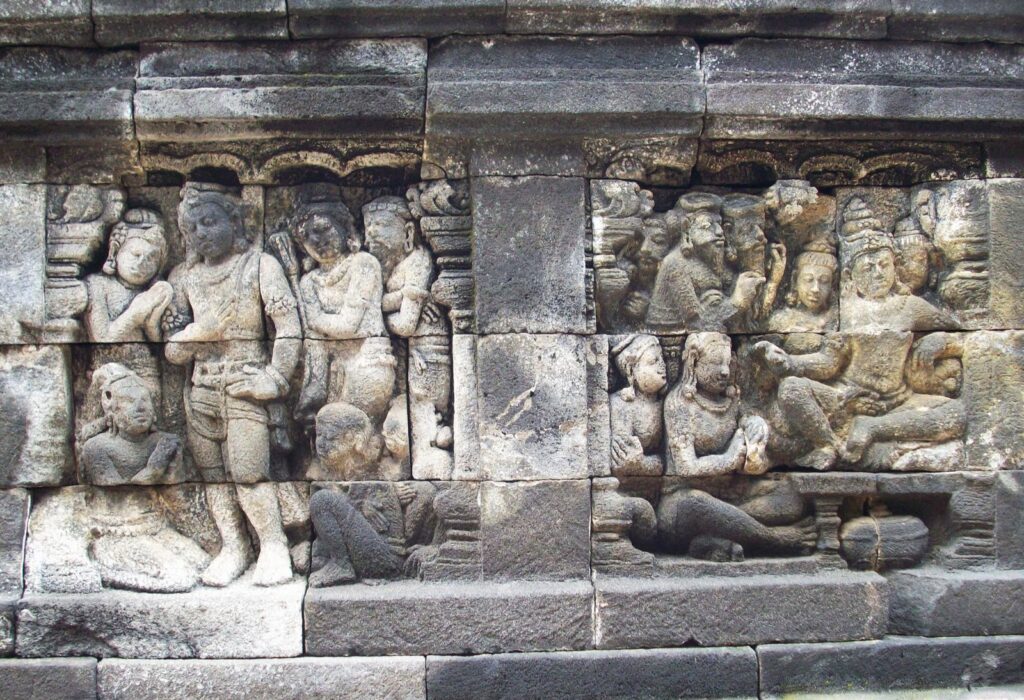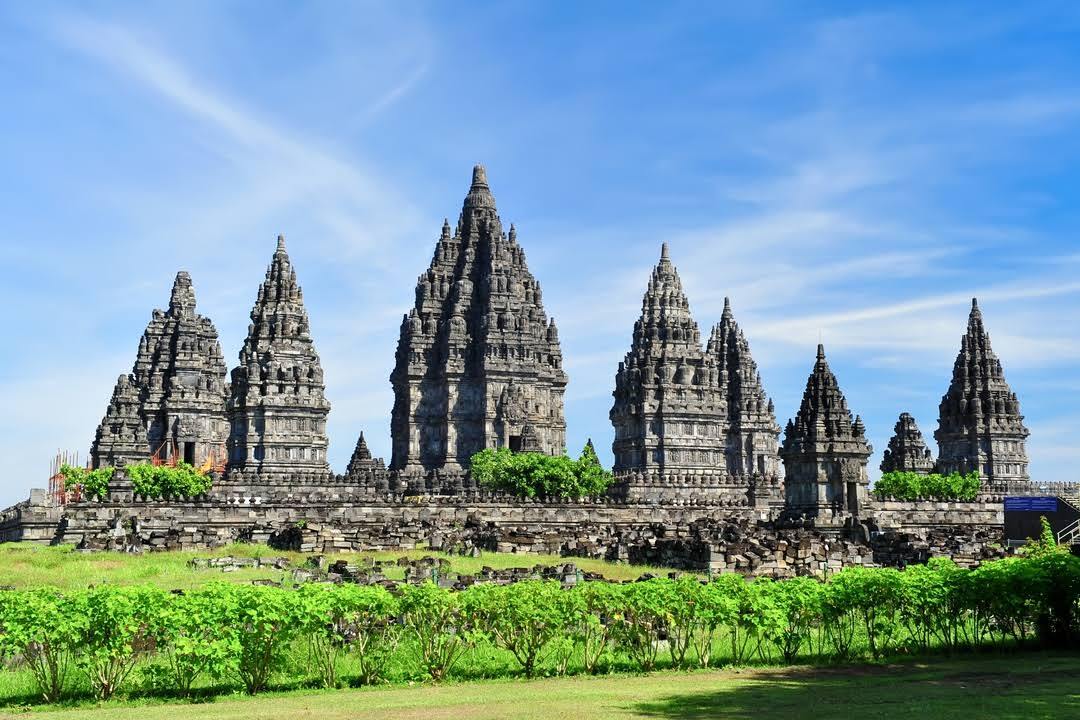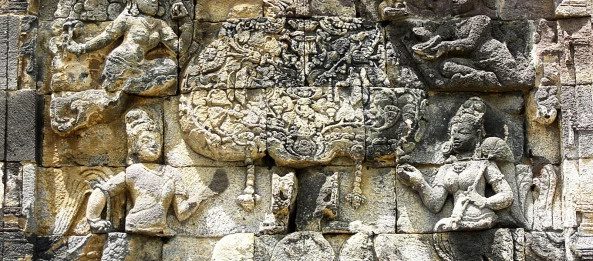Sri Maharaja Rakai Pikatan Mpu Manuku was the sixth king of the Medang Kingdom of the Central Java period (or commonly called the Ancient Mataram Kingdom ) who ruled around the 840s – 856 .
Rakai Pikatan Real name and title
Rakai Pikatan is included in the list of kings in the Mantyasih inscription version . His real name according to the Argapura inscription is Mpu Manuku . In the Munduan inscription in 807, it is known that Mpu Manuku served as Rakai Patapan. Then in the Kayumwungan inscription in 824, the position of Rakai Patapan was held by Mpu Palar. Maybe at that time Mpu Manuku had moved to Rakai Pikatan.
However, in the 850 Water Bone inscription, Mpu Manuku again holds the title Rakai Patapan. Meanwhile, according to the Gondosuli inscription, Mpu Palar had died before 832 . May the Patapan area again become the responsibility of Mpu Manuku, even though at that time he was already a maharaja . This tradition is true in the history of the Medang Kingdom where a king also includes his old title as regional head, for example Maharaja Rakai Watukura Dyah Balitung .
According to the Wantil inscription, Mpu Manuku built a new capital city in the village of Mamrati so that he was nicknamed Rakai Mamrati. The new palace was named Mamratipura, as a replacement for the old capital city, Mataram .
The Wantil inscription also states that Rakai Mamrati abdicated and became a brahmin with the title Sang Jatiningrat in 856 .
Marriage with Pramodawardhani
The Wantil inscription also mentions the marriage of Sang Jatiningrat alias Rakai Pikatan Mpu Manuku to a daughter of another religion. Historians agree that the princess was Pramodawardhani of the Sailendra dynasty, who was Mahayana Buddhist , while Mpu Manuku himself embraced the Hindu Shiva religion .
Pramodawardhani is the daughter of Samaratungga whose name is recorded in the Kayumwungan inscription in 824 . At that time, the one who served as Rakai Patapan was Mpu Palar, while Mpu Manuku’s name was not mentioned at all. Maybe at that time Pramodawardhani was not yet the wife of Mpu Manuku.
Historian De Casparis considers Rakai Patapan Mpu Palar the same as Maharaja Rakai Garung and is the father of Mpu Manuku. Both of them were members of the Sanjaya dynasty who succeeded in establishing a marital relationship with the Sailendra dynasty .

This theory was rejected by Slamet Muljana because according to the Gondosuli inscription, Mpu Palar was an immigrant from the island of Sumatra and all of his children were girls. After all, Mpu Manuku had already served as Rakai Patapan before Mpu Palar. The possibility that Mpu Manuku is Mpu Palar’s son is very small.
Meanwhile, Mpu Manuku had served as Rakai Patapan in 807 , while Pramodawardhani was still a girl in 824 . This shows that the age difference between the two is quite far. Perhaps, Rakai Pikatan Mpu Manuku is the same age as his father-in-law, Samaratungga .
Pramodawardhani is not the only wife of Rakai Pikatan. Based on the Hadap inscription, it is known that another wife of Rakai Pikatan was named Rakai Watan Mpu Tamer. Presumably at that time the title of mpu was not synonymous with men.
This concubine named Rakai Watan Mpu Tamer is the grandmother of Dyah Balitung’s wife , the king who issued the Mantyasih inscription ( 907 ).
War Against Balaputradewa
Balaputradewa son of Samaragrawira was the king of the Srivijaya Kingdom . The popular theory pioneered by the historian Krom states that Samaragrawira is identical with Samaratungga so that automatically Balaputradewa is Pramodawardhani’s brother .
In the Wantil inscription it is stated that Sang Jatiningrat alias Rakai Pikatan fought against an enemy who built a defense in the form of a pile of stones on a hill. The enemy was defeated by Dyah Lokapala, the son of Jatiningrat. In the inscription there is the term Walaputra, which is interpreted as Balaputradewa . As a result, the theory emerged that there had been a civil war over the throne after Samaratungga’s death which ended in the defeat of Balaputradewa .
Slamet Muljana rejected the notion that Samaragrawira was identical with Samaratungga because according to the Kayumwungan inscription, Samaratungga only had one child named Pramodawardhani . According to him, Samaragrawira is more accurately called the father of Samaratungga . Thus, Balaputradewa was the uncle of Pramodawardhani .
Popular theory assumes Balaputradewa built a fort from heaps of stone on the hill of Ratu Baka in the war against Rakai Pikatan and Pramodawardhani . However, according to the historian Buchari, on Ratu Baka hill there is no inscription in the name of Balaputradewa , but in the name of Rakai Walaing Mpu Kumbhayoni. Perhaps this figure who rebelled against the government of Rakai Pikatan because he also claimed to be a descendant of the original founder of the kingdom, namely Sanjaya .
Meanwhile, the term Walaputra in the Wantil inscription means “youngest son”. So, this term is not another name for Balaputradewa , but a nickname for Dyah Lokapala , the hero who managed to defeat Rakai Walaing, his father’s enemy.
Thus, the popular theory that there has been a civil war between Rakai Pikatan and his brother-in-law, Balaputradewa, may be wrong. May Balaputradewa leave the island of Java not because he lost the war, but because from the start he had no right to the throne of the Medang Kingdom , considering that he was not the son of Samaratungga but his younger brother.
The Sailendra dynasty under the leadership of Dharanindra succeeded in conquering the Srivijaya Kingdom , even as far as Cambodia . After Dharanindra ‘s death , his power was inherited by Samaragrawira . Perhaps he was not as strong as his father because according to the Po Ngar inscription, Cambodia succeeded in becoming independent from Javanese colonialism in 802 .
On this basis, after the death of Samaragrawira, the power of the Sailendra dynasty was divided into two, with the aim of making its supervision easier. The power over the island of Java was given to Samaratungga , while the power over the island of Sumatra was given to Balaputradewa .
Establishment of Prambanan Temple

The Wantil Inscription, also known as the Siwagrha Inscription , was issued on November 12, 856 . This inscription not only mentions the establishment of the Mamratipura palace, but also mentions the construction of the sacred Siwagrha building, which translates as Shiva Temple.
Based on the characteristics described in the inscription, Shiva Temple is identical to one of the main temples in the Prambanan Temple complex . Thus, the main building in the complex was built by Rakai Pikatan, while other smaller temples were probably built during the reign of later kings.
Also read history of prambanan temple.
End of Reign
The Wantil inscription also mentions that Rakai Pikatan alias Rakai Mamrati abdicated to become a brahmin with the title Sang Jatiningrat in 856 . The throne of the Medang Kingdom was then held by his youngest son, namely Dyah Lokapala alias Rakai Kayuwangi .
The appointment of the youngest son as maharaja is presumably based on the merit of defeating the rebel Rakai Walaing Mpu Kumbhayoni. This caused dissatisfaction because the Munggu Antan inscription later appeared in the name of Maharaja Rakai Gurunwangi. This name is not included in the list of kings of the Mantyasih inscription , so it can be estimated that at the end of the reign of Rakai Kayuwangi there had been a royal split.
The names of Rakai Gurunwangi Dyah Saladu and Dyah Ranu are found in the Plaosan inscription after Rakai Pikatan. Maybe they are Rakai Pikatan’s children. Or maybe the relationship between Dyah Ranu and Dyah Saladu is husband and wife.
In 807 Mpu Manuku had become an official, namely as Rakai Patapan. He abdicated to become a brahmin in 856 . Maybe at that time he was over 70 years old. After his death, Sang Jatiningrat was buried or didharmakan in the village of Pastika.

